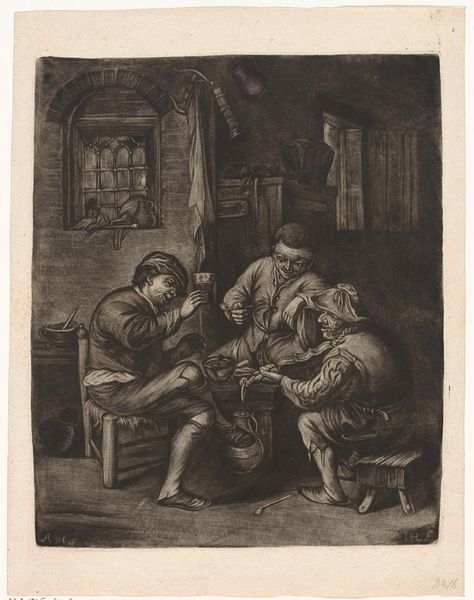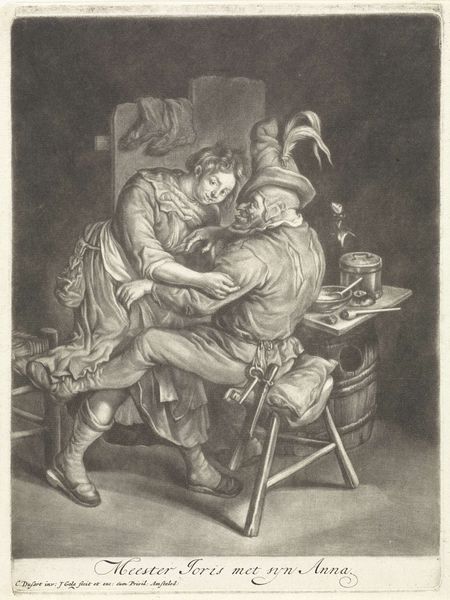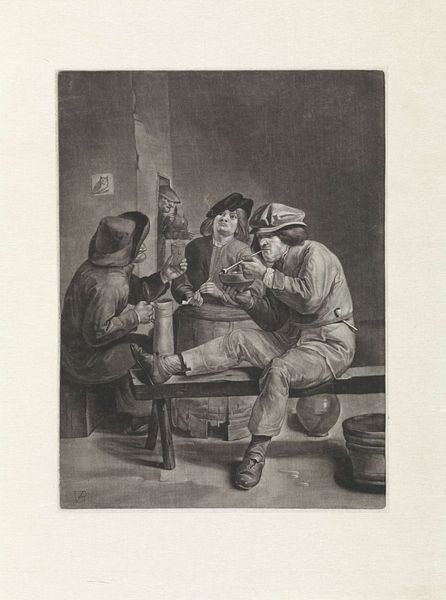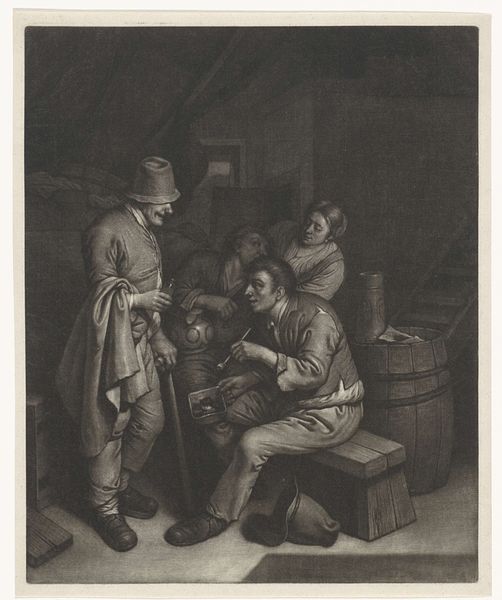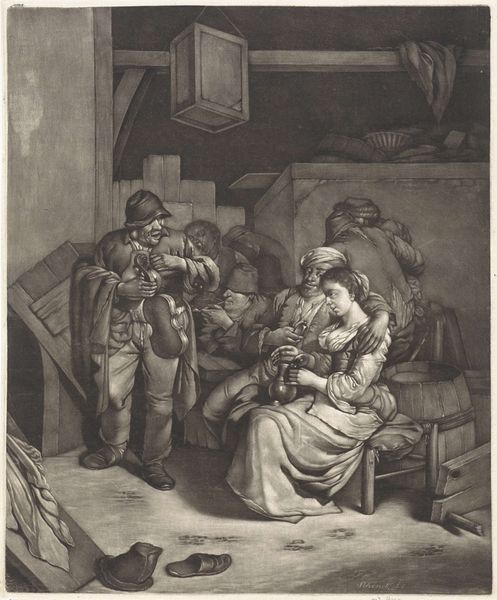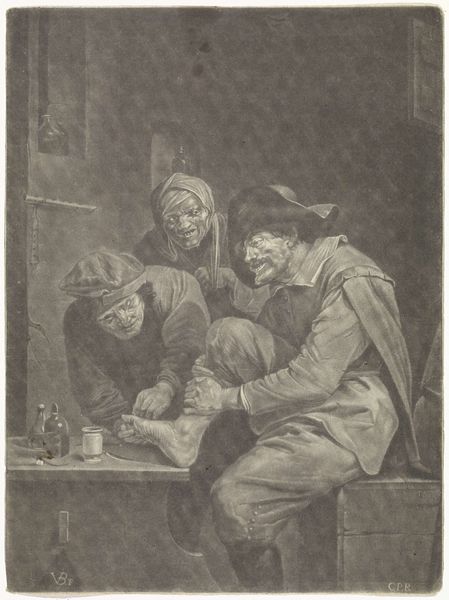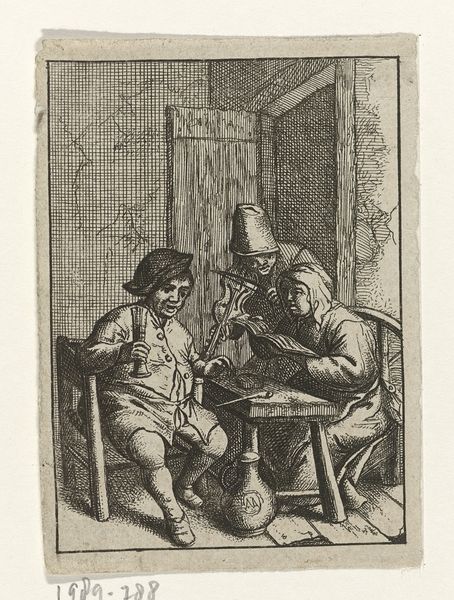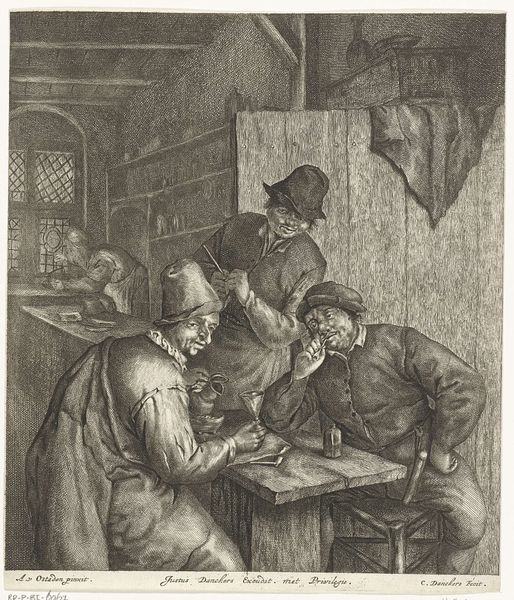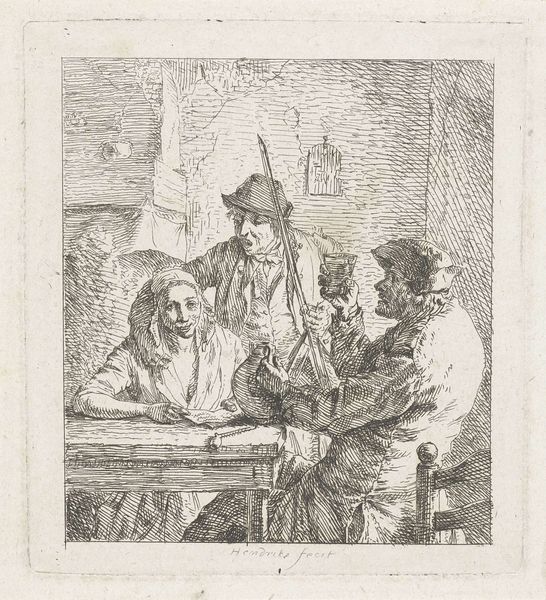
print, etching
#
baroque
#
dutch-golden-age
# print
#
etching
#
figuration
#
genre-painting
Dimensions: height 242 mm, width 174 mm
Copyright: Rijks Museum: Open Domain
Curator: Ah, this print, "Herbergscène," or "Tavern Scene," by Johannes de Groot the Younger. It's an etching from somewhere between 1698 and 1776 and gives a peek into everyday life of the Dutch Golden Age. Editor: My initial thought? Smoky, like the very air is thick with something unsaid. It’s all shadows and dim light. The scene feels intimate, though not necessarily welcoming. Curator: The lighting certainly dictates a sense of interiority. And while etched prints are often thought of as documentary, their choices always reflect a social reading of subject matter. I’m drawn to the arrangement of figures around a hearth; notice how all of them share that space? The composition anchors on this shared moment but everyone seems rather preoccupied. Editor: Yes, you see the body language right away. One man is puffing a pipe, almost lost in his own world; meanwhile, the other is mid-conversation, or maybe mid-argument. Curator: Right! He might be holding up his hands as if to say, “Enough!” And the woman? Is she attempting to diffuse this interaction? Maybe she symbolizes domestic tranquility juxtaposed against masculine tensions within these informal settings. Taverns played a central role for public social interactions during the Dutch Golden Age! Editor: You can almost hear the background noise of the tavern: tankards clanking, a low rumble of voices. Do you get a sense that artists chose tavern settings to depict, shall we say, less refined aspects of Dutch society? Or is there also some romanticizing happening? Curator: The cultural symbolism of taverns, the ambiguity… yes, I believe you’re right about the duality here. There may have been a sense of wanting to show the every-day-ness but that comes tinged by artful selection of "every day" scenes. A desire to explore, and even gently critique the human conditions present inside places where norms relaxed a little. Editor: Interesting point. So in some ways, through seemingly candid snapshots like this tavern scene, art held up a mirror to society. I still come back to that overall feeling of unspoken emotions percolating under the surface. Curator: Well said. “Herbergscène" remains such a resonant study because it encapsulates that social complexity – tensions and tranquility, personal introspection amid collective experiences, captured in a dark, intimate light. Editor: Right – an opportunity to remember daily rituals and emotions we have already moved past in the course of socio-historical development, and those emotions we seem to keep in circulation, generation to generation.
Comments
No comments
Be the first to comment and join the conversation on the ultimate creative platform.


